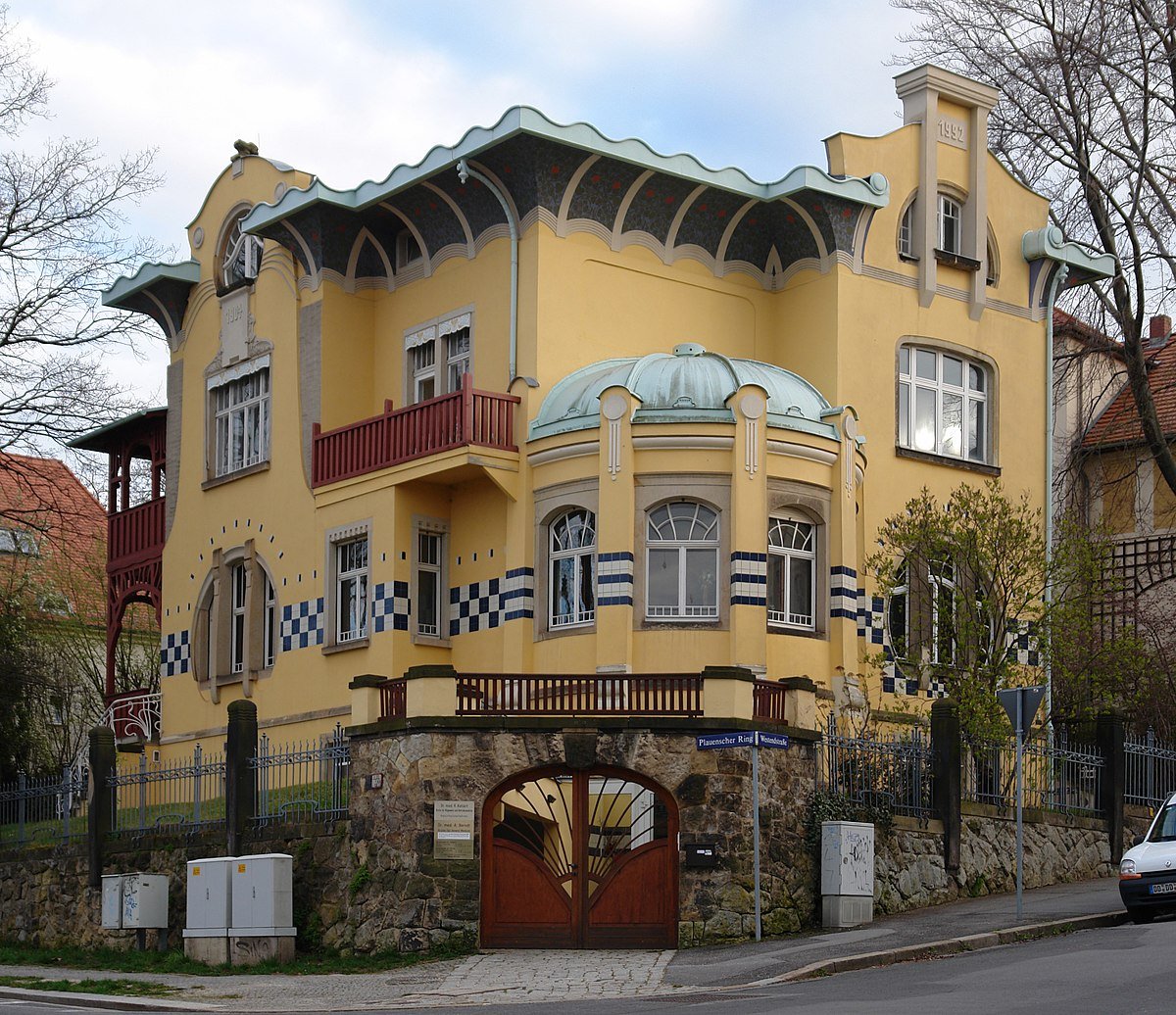#14184. Exquisite Yellow Art Nouveau Façade with Undulating Roof and Domed Bay Window

Before us stands a magnificent example of Art Nouveau (Jugendstil) architecture, showcasing the distinctive features of this early 20th century movement. The building is characterized by an asymmetrical yet harmonious yellow façade with expressive decorative elements.
Particularly noteworthy is the undulating roofline with its elegant curve, giving the house an organic, flowing form typical of Art Nouveau. The façade is richly decorated: we see blue checkered tiles in the lower part of the building creating a contrasting belt, arched windows of varying shapes and sizes, and an expressive domed bay window with a copper roof.
Balconies with wooden reddish-brown railings add warmth and contrast to the building, while the stone base with an arched entrance creates an impression of a solid foundation. The façade decoration features the characteristic Art Nouveau plant-inspired ornaments and flowing, "natural" lines.
Such techniques as the combination of contrasting colors, use of asymmetry, curvilinear forms, and various textures can be creatively adapted when designing a modern façade to give a house individuality and artistic expressiveness. Decorative elements can be simplified for contemporary interpretation while preserving the spirit of the original style.